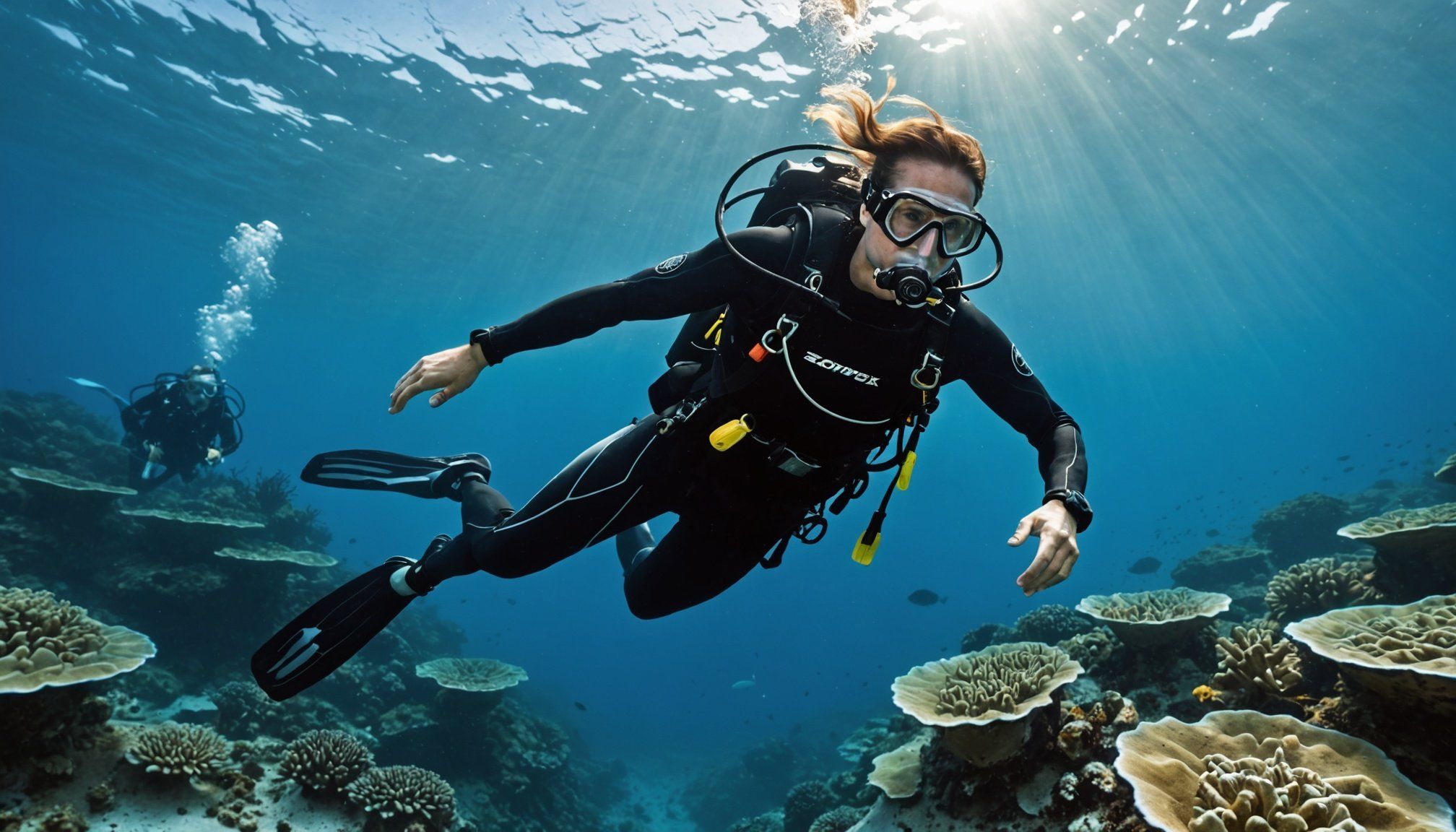Importance of Proper Dive Entry Techniques
Understanding the dive entry significance is crucial for any aspiring diver. The initial contact with water can greatly affect your overall dive performance. A well-executed entry reduces drag, allowing for smoother transitions and maintaining momentum as you move through the water. This improvement in performance is not only about aesthetics but also about efficiency in competitive or recreational diving environments.
Mastering dive entry techniques carries the dual benefits of safety and skill development. Proper techniques ensure a safer approach by minimizing the risk of injury during impact. By honing these skills, divers can focus on refining their abilities and pushing boundaries without compromising their safety.
Also read : Mastering the sprint: key strategies to boost your track and field starts
On the psychological front, gaining confidence through effective entry techniques can transform a diver’s approach to the sport. Confidence can alleviate anxiety associated with hitting the water, enabling divers to execute their routines more effectively. This mental preparedness not only enhances performance but also encourages divers to explore and experiment with new techniques, ultimately leading to growth and development in their diving journey.
Step-by-Step Strategies for Perfecting Dive Entry
Achieving the perfect dive entry involves understanding and applying precise dive entry techniques. Developing a strong dive strategy ensures consistent performance and safety. The first step is understanding your entry style, as different styles require unique approaches.
Additional reading : Mastering balance: essential techniques to elevate your surfing skills and unleash your full potential
Analyzing Your Entry Style
Identifying the entry style—whether from a platform or shore—is crucial. Evaluating your current techniques can help pinpoint areas for improvement. This self-analysis sets the stage for significant enhancements in dive strategy guidelines.
Body Positioning
Maintaining a streamlined body position is essential for reducing drag and enhancing dive efficiency. A proper position helps fluently transition from air to water, minimizing disruptions that could affect speed or motion. Precision in positioning fosters a smoother, more controlled entry.
Timing and Coordination
Equally important is mastering timing and coordination. Practicing the timing of the jump ensures optimal entry into the water. Aligning jumps with perfectly timed coordination enhances overall performance, achieving a seamless dive entry. Comprehensive practice focussed on timing can result in a marked improvement in dive success.
Perfecting these strategies in dive entry techniques leads to notable advancements, enhancing both enjoyment and competitive potential for divers.
Expert Tips from Professional Divers
Gleaning expert diving advice from seasoned professionals can significantly enhance your dive entry skills. Professional diver insights often highlight innovative strategies and techniques that can be applied to your practice. One common strategy involves consistent drill practices to master skills and build muscle memory. By incorporating regular drills into your exercises, divers can reinforce correct movement patterns and ensure dive entry techniques are executed flawlessly.
Observing and learning from more experienced divers also plays a crucial role in improvement. This can involve attending diving workshops or collaborating during practice sessions to glean insights from professional diver techniques. These observations can help refine your own entry style and alert you to subtle adjustments that might enhance performance. Try to mirror specific techniques, such as body positioning or timing adjustments, used by the professionals.
Additionally, acknowledging the importance of consistent practice cannot be overstressed. It not only polishes your current technique but can also assist in developing an adaptable dive strategy, enabling you to adjust seamlessly to various diving environments. This forward-thinking approach ultimately results in a holistic improvement in dive performance and safety.
Common Mistakes to Avoid in Dive Entry
Avoidable errors in dive entry can have significant consequences. Recognising and addressing these potential mistakes is essential for improving both safety and performance.
Misjudging Depth and Distance
Miscalculating the depth or distance of a dive can lead to serious repercussions. This common error impacts the dive’s fluidity and increases the risk of injuries. Divers can avoid this mistake by conducting proper assessments and rehearsing their approach to ensure a successful execution.
Incorrect Body Alignment
Poor body alignment is a frequent issue that can hinder dive performance. Proper alignment ensures a streamlined entry, reducing drag and enhancing speed. Divers are encouraged to practice with precise posture right from the take-off to the entry for optimal results.
Failing to Prepare Mentally
Mental readiness is as crucial as physical preparation. Lack of focus or anxiety before a dive can result in errors. Engaging in mental preparation techniques, such as visualising the dive or deep breathing, helps maintain concentration and mitigate jitters, ensuring a controlled and successful entry. A focused mindset contributes significantly to executing dives with confidence and precision.
Resources for Further Learning and Improvement
For those looking to enhance their dive entry techniques, a plethora of diving resources is available. Engaging with online courses and instructional videos is a highly effective start. These platforms often feature demonstrations by expert divers, providing valuable insights into proper form and technique. Popular websites and streaming platforms list numerous options, catering to different skill levels.
Books authored by diving professionals can be an excellent resource. Often, such books delve into the nuances of diving skills, offering detailed explanations and exercises for improvement. These guides not only provide theoretical knowledge but are also filled with practical tips, making them invaluable for divers aiming to refine their craft.
Interacting with the diving community can further amplify the learning experience. Dive forums and local clubs bring enthusiasts together, allowing for the exchange of experience and knowledge. Discussions and workshops with fellow divers can provide real-world perspectives and solutions to common challenges, creating an interactive platform for improvement. This collaboration fosters a supportive network, enabling divers to learn new skills in an environment that encourages growth. Engaging with these resources ensures comprehensive skill development, leading to more confident and successful dive entries.
Testimonials and Success Stories
Diving enthusiasts often share their remarkable dive entry experiences, shedding light on the transformative journey of mastering these techniques. Diverse diver testimonials illustrate how perseverance and focus on perfect entry techniques significantly improve a diver’s overall performance in and out of the water.
Personal Experiences
Many divers recount personal stories of overcoming initial challenges to refine their dive entries. By gradually adapting to expert strategies, they have enhanced their dive performance, leading to more fluid and confident dives. This personal growth is vital to nurturing a lifelong love of diving.
Impactful Case Studies
Case studies abound in the diving community, offering insights into how effective entry techniques have brought about tangible advancements. For instance, divers who meticulously improve entry strategy report a notable decrease in entry errors and a more robust execution of complex dives. These examples provide realistic benchmarks for aspirant divers to emulate.
Triumph Over Challenges
The process of surmounting obstacles often leads to elevated confidence among divers. Hearing from those who faced and overcame challenges through dedicated practice offers hope and motivation. Such accounts demonstrate that the pursuit of perfection in dive entry can lead to enriched diving experiences and a stronger connection to the sport.











